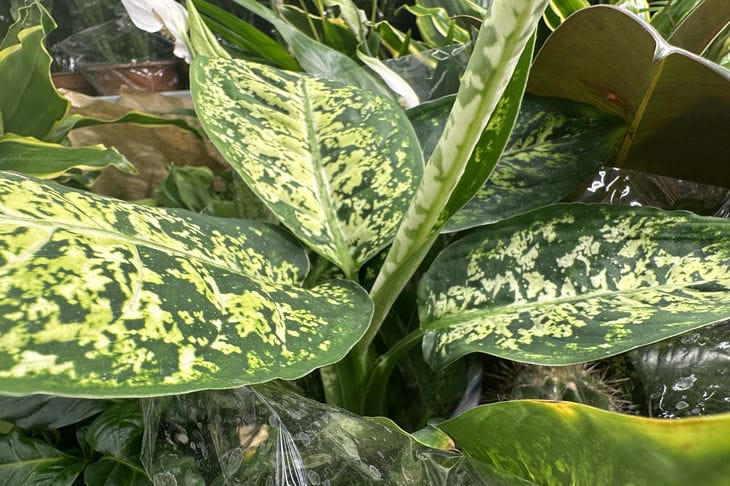Plants are a common cause of poisoning in cats.
Many popular houseplants contain toxins that can kill your pet within hours.
Here is a complete list of threats and the algorithm of actions in case of poisoning.

1. Lilies (Lilium)
All parts of the plant are dangerous, including pollen and water from the vase.
Symptoms: vomiting, salivation, refusal to eat → acute renal failure develops after 12–24 hours.
Prognosis: Without treatment, mortality reaches 100%.
First aid for a pet includes rinsing the mouth with water, after which the cat must be taken to the clinic. The veterinarian will prescribe IVs and medications to support the kidneys.
2. Dieffenbachia
Toxin: Calcium oxalate crystals.
Symptoms: burn of the oral mucosa, swelling of the tongue and larynx, difficulty breathing.
Prognosis: with timely assistance - favorable.
Actions:
- Remove any remaining plant material from the mouth.
- Give your cat milk or water to neutralize the toxin.
- Take him to the vet to get antihistamines to relieve the swelling.
3. Azalea (Rhododendron)
Toxin: gracianotoxin.
Symptoms: salivation, vomiting, arrhythmia, convulsions.
Prognosis: Severe cases lead to coma.
Treatment: gastric lavage, activated charcoal, supportive therapy, visit to the veterinarian.
4. Cyclamen
Dangerous parts: roots.
Toxin: cyclamine.
Symptoms: vomiting, diarrhea, convulsions, respiratory arrest.
Important: Even a small piece of root is fatal for kittens.
5. Oleander
Toxin: oleandrin.
Symptoms: vomiting, bloody diarrhea, arrhythmia, collapse.
Prediction: One leaf can kill an average sized cat.
First aid: immediate transportation of the injured animal to a veterinary clinic.
6. Hydrangea
Toxin: cyanide.
Symptoms: weakness, shortness of breath, cyanosis of the mucous membranes.
Treatment: antidotes (sodium thiosulfate), oxygen therapy, showing the animal to a veterinarian.
7. Sansevieria (“Mother-in-law’s tongue”)
Toxin: saponins.
Symptoms: Nausea, diarrhea, inflammation of the mucous membranes.
Treatment: contact your veterinarian.
How to secure your home
- Remove dangerous plants to inaccessible places: high shelves, closed terrariums.
- Buy safe alternatives, such as chlorophytum, which purifies the air and is non-toxic, or valerian, the smell of which cats simply adore.
- Grow cat grass (oats, wheat) - it helps remove hair from the stomach.
- Print out a list of poisonous plants and hang it on your refrigerator.
If you have the slightest suspicion of poisoning, do not delay your visit to the veterinarian!








